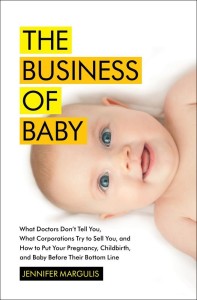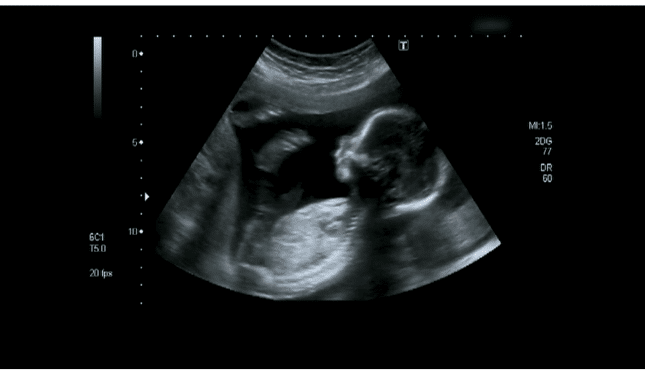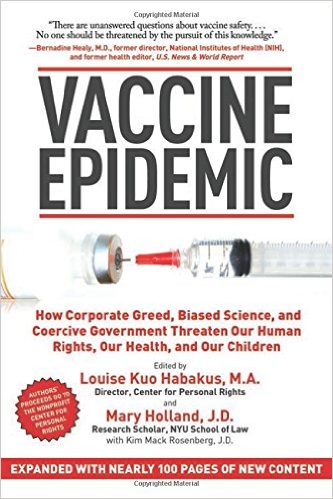December 11, 2013 — Jennifer Margulis, PhD and Manuel Casanova, MD
with Kelly Brogan, MD
 Join Kelly Brogan, MD, as she speaks with Jennifer Margulis, author of the acclaimed book, The Business of Baby and Manuel Casanova, the Gottfried and Gisela Kolb Endowed Chair in Outpatient Psychiatry and a Professor of Anatomical Sciences and Neurobiology at the University of Louisville. They will discuss the latest, best research on the most universally applied intervention in pregnancy: ultrasound.
Join Kelly Brogan, MD, as she speaks with Jennifer Margulis, author of the acclaimed book, The Business of Baby and Manuel Casanova, the Gottfried and Gisela Kolb Endowed Chair in Outpatient Psychiatry and a Professor of Anatomical Sciences and Neurobiology at the University of Louisville. They will discuss the latest, best research on the most universally applied intervention in pregnancy: ultrasound.
Why do women get ultrasounds? Are they requested and desired? Are they recommended? Is there prior discussion or consent? What is known about risks? What is suspected? What about autism? What might be a more reasonable or cautious application of the technology? Should it be abandoned?
 Jennifer Margulis, PhD is a senior fellow at the Schuster Institute for Investigative Journalism. A former Fulbright Fellow and an award-winning journalist, she has worked on a child survival campaign in Niger, West Africa, and championed the rights of rescued child slaves in Pakistan. Her cover story for Smithsonian magazine was chosen by Natalie Angier for inclusion in Best Science Writing 2009. The Business of Baby is her fifth book. Its research was partially made possible by the Fund for Investigative Journalism.
Jennifer Margulis, PhD is a senior fellow at the Schuster Institute for Investigative Journalism. A former Fulbright Fellow and an award-winning journalist, she has worked on a child survival campaign in Niger, West Africa, and championed the rights of rescued child slaves in Pakistan. Her cover story for Smithsonian magazine was chosen by Natalie Angier for inclusion in Best Science Writing 2009. The Business of Baby is her fifth book. Its research was partially made possible by the Fund for Investigative Journalism.
 Manuel Casanova, MD, the Gottfried and Gisela Kolb Endowed Chair in Outpatient Psychiatry and a Professor of Anatomical Sciences and Neurobiology at the University of Louisville, researcher and investigator into the role of ultrasound technology in brain-based pathology seen in autism. His research has focused on the cell minicolumn, a vertical unit of 80 to 100 neurons having a common latency of response to stimulation. His most recent studies have investigated the presence of abnormalities of minicolumnar organization and lateralization in the brains of patients who exhibit language disturbances, including autism, Asperger’s syndrome, and dyslexia. He is internationally known for his work in autism.
Manuel Casanova, MD, the Gottfried and Gisela Kolb Endowed Chair in Outpatient Psychiatry and a Professor of Anatomical Sciences and Neurobiology at the University of Louisville, researcher and investigator into the role of ultrasound technology in brain-based pathology seen in autism. His research has focused on the cell minicolumn, a vertical unit of 80 to 100 neurons having a common latency of response to stimulation. His most recent studies have investigated the presence of abnormalities of minicolumnar organization and lateralization in the brains of patients who exhibit language disturbances, including autism, Asperger’s syndrome, and dyslexia. He is internationally known for his work in autism.
 Kelly Brogan, MD is Medical Director of Fearless Parent and mom of two. She is board certified in Psychiatry, Psychosomatic Medicine, and Integrative and Holistic Medicine. Holistic living, environmental medicine, and nutrition are the bedrock of her functional medicine practice. She serves as medical advisor to GreenMedInfo, Pathways to Family Wellness, and Fisher Wallace. Kelly holds degrees from MIT and Cornell Medical School.
Kelly Brogan, MD is Medical Director of Fearless Parent and mom of two. She is board certified in Psychiatry, Psychosomatic Medicine, and Integrative and Holistic Medicine. Holistic living, environmental medicine, and nutrition are the bedrock of her functional medicine practice. She serves as medical advisor to GreenMedInfo, Pathways to Family Wellness, and Fisher Wallace. Kelly holds degrees from MIT and Cornell Medical School.
For the science geeks among us, we invite you to read Kelly’s latest post (below).
Perils of Peeking into the Womb: Ultrasound Risks
“Clinical use of diagnostic ultrasound imaging during pregnancy has a long history of safety and diagnostic utility, as supported by numerous human case reports and epidemiological studies.
However, there exist in vivo studies linking large but clinically relevant doses of ultrasound applied to mouse fetuses in utero to altered learning, memory, and neuroanatomy of those mice.”
How may doctors and unknowing patients be colluding to harm unborn babies? This recent study suggests that the seemingly benign practice of obstetrical ultrasonography is one practice that deserves urgent reassessment. Researchers exposed pregnant mice at 14.5 days gestation (a neurologically vulnerable window) to 30 minutes of fetal ultrasound and assessed the pups’ behavior at 3 weeks of age. They found that the exposed pups were significantly less interested in social interactions and had significant levels of behavioral hyperactivity, in the presence of an unfamiliar mouse.
Why did ultrasounds become routine?
Today’s children have been exposed to an unprecedented level of ultrasound technology, both in frequency and intensity. In 2001, 67% of pregnant women had at least 1 ultrasound, and in 2009, that percentage jumped to 99.8% with an average of 3 per woman. What accounts for this increase? Do we have evidence to suggest that this intervention is saving lives, changing outcomes, and that it is safe? What about safety in the settings it is applied most frequently, such as advanced maternal age, metabolic syndromes, and complications? Could these higher risk pregnancies represent a category of fetus that is more vulnerable to potential side effects of an intervention like ultrasound?
It appears that, answers to these questions remain elusive despite widespread application for the following conventionally accepted reasons:
- Gender determination
- Screening for anomalies
- Assessment of size/fluid level
- Visualization for bonding/curiosity/entertainment
- Assessment of placental position
As one survey concluded,
“Women appear to want sonograms for reasons that may not assist their provider with immediate clinical decision making. This is a potentially important disagreement between cost-saving and patient satisfaction that maternity care providers must consider when deciding whether to perform prenatal sonography for women with low-risk pregnancies.”
In other words, women are lured into the prospect of reassurance and information about an uncertainty-laden bodily experience, and providers may cater to that desire in neglect of accumulating concerns, lack of benefit, and conflict around financial gains ($86-102/scan).
Are they safe and effective?
[Continue reading Perils of Peeking Into the Womb: Ultrasound Risks]














Would love to win a copy of the Business of Baby! Have heard fantastic things. I’m the Librarian for a local ICAN chapter and this would be an amazing addition!
I got so many ultrasounds with my first, it was ridiculous. I went in with my second and planned to have none, but due to complications ended up with 2. I am now pregnant for the third time, planning only to get one (because I am completely unsure how far along I am, I will get one at my first appointment).
Awesome show today! Had some of the women in my office listening and they loved it. Met Jennifer at a Fearless Parent event but haven’t had a chance to get the book yet 🙁 i do recommend it to everyone i talk to though. would be an awesome gift if I won it!
Thanks for this discussion. I often wondered about the accuracy of these tests and the rationale behind doing them multiple times in a single low-risk pregnancy.
I had numerous ultra sounds with my first that has many medical issues. I would do things very differently if given the chance! I would love a copy of your book. I’ve learned a lot from your page!
Great post! Thanks for the info! 🙂
The Business of Baby is the most informative pregnancy book I have read.
I would love a copy of the business of baby! I already love the information shared. I’m sure the book is even better.
I had no clue about the risks of ultrasound while pregnant with my oldest daughter. My OB gave me the typical “they are extremely safe….we’ve been using it for decades with no problems” line. I didn’t know back then all of the other things they used over long periods that were later found harmful (DES, X-ray, etc.) and got all of the recommended ultrasounds. Those included an early dating u/s, the one with the quad screen and the 20 wk scan (that I had to go back for 3 times to finally get a good look at her brain). Even tho the sex was seen during the earlier u/s checking nuchal translucency, etc. my OB still offered an additional one to “check gender” because my insurance would cover it!! I declined :/
With my second, we did only the 20 wk scan for increased peace of mind for our home birth and to check the sex.
I wish more OBs practiced evidence-based care, in regards to u/s and everything else! And if their care deviates from evidence-based practice then patients should be informed of that.
I’ve learned a lot since before I ever got pregnant, but there’s always more to learn and I’m sure there are things I could still learn from Jennifer’s book.
Thanks for taking a look at the evidence surrounding ultrasounds! It’s a much-needed dialogue. Here’s hoping I win the book! 🙂
I am glad I found this page about two weeks ago. You provide awesome articles and great information.
Even though I was planning (and ultimately had a successful) homebirth, I still fell into the trap of thinking I needed the fetal anatomy scan at 20 weeks. My midwife didn’t push it, but everyone around me did. I ended up with two, back to back weeks, because they “couldn’t get an accurate measure on everything.” I refused any and all subsequent ones after that, even when my son was “growing slowly.” I was also without insurance, and those two ultrasounds cost $600. Even without the cost factor, I will not be getting any with future babies.
I’m training to be a doula, and I would love a copy of Jennifer’s book for my arsenal.
I dunno, seems like you’ve only provided some thin and tangential evidence to suggest current practices are unsafe…and for what ? To scare women while they’re pregnant ? I’m sticking with my OB’s advice. She’s been in practice for 20 years. I trust her advice on this alot more than anything coming from a journalist and a psychiatrist.
I’m sad that I really didn’t come across this info until I’d had multiple unnecessary ultrasounds with this pregnancy. We’re do anytime now so we’ll see how it has affected my LO. I now share this info when I can and hope that so many things change before my little girl has any babies!
Thank you for this! I can’t wait to read the book, regardless if I win it or not. Its our duty to be informed so we can make the best decisions we can when it comes to our bodies and those of our children.
Interesting topic to come across right now. I am currently 17 weeks with baby number two. We are planning a homebirth and have declined the 20 week ultrasound. However, we are experincing push back from family members who are concerned about the “what ifs…” So glad to see research that I can share to justify my decisions.
I was so pissed when my ob peformed a transvaginal ultrasound on me at 10 weeks. I had no idea what that was and she caught me off guard. Even after I expressed concern, she made me feel like I was silly and did it anyway. Her reason was to see if there was really a baby in there. She also got very defensive after asking her to use a fetascope intead of a doppler, which is also ultrasound technology. I switched to a group of midwives after that at a different hospital, who also made me feel like I was crazy. I agreed to have one ultrasound done because I was going for a vbac and wanted to make sure everything looked fine and that the placenta was in the right place, but I made them do it quick and refused a trainee to train on me. I also refused continuous fetal monitoring, for which they set up multiple meetings with me to try to scare me telling me that my baby could die if I didn’t. I had to fight to the very end. It was nuts. Luckily in the end I found a Homebirth midwife, who was so awesome. I had a HBAC waterbirth at home with no interventions at all, it was beautiful.
Hello all! Thanks for the feedback. It may be worth mentioning that there are some indications where ultrasound *is* helpful. These include identification of placental location after cesarean. So glad for the thoughtful considerations of this intervention.
It may interest your readers to know that, any time after 10 weeks (no maximum limit for gestational age, but you do have to know how far along you are), it is possible to determine the baby’s gender with an analysis of blood drawn from the mother’s arm. Strands of baby’s DNA can be found in mother’s blood. This blood draw is offered in conjunction with an ultrasound for a “first trimester screening” to women whose pregnancies are considered high risk. (I am considered to be of advanced maternal age, so that included me.)
The Maternal Fetal Medicine specialists I was referred to for the first trimester screening refused to do the blood draw without the ultrasound (and treated me like I was crazy), but my birth center agreed to do it. Thus, I was able to find out the baby’s gender and get peace of mind regarding several common chromosomal abnormalities (the true purpose for the screening), WITHOUT having an ultrasound. An interesting point: u/s techs mistake genders all the time, but DNA doesn’t lie! The quoted out of pocket cost for having just the blood analysis without insurance was about $100, but because of the risk category it was a covered test for me.
So… You don’t have to go with no information at all, if you want to avoid ultrasounds! And if one facility or careprovider won’t do what you’re asking, look around!
Hello, do you still have the recording? I tried to access it but it’s not possible.
Thank you,
Gabriela.
Hi, Gabriela. I just tried it to be sure — it works! Many blessings.